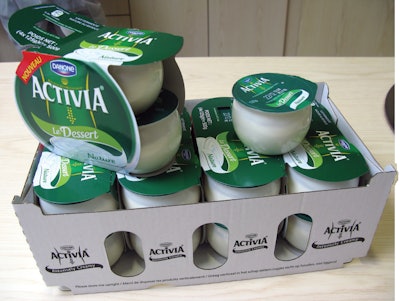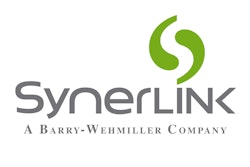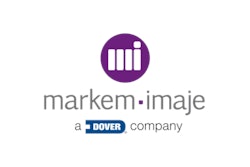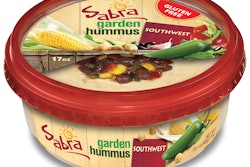Of the millions and millions of single-serve yogurt containers filled each year, the vast majority are polystyrene, both the preformed variety and those formed from roll stock on a thermoform/fill/seal system.
One notable exception is a new line at Danone’s plant in the French city of Pays de Bray, about 90 minutes northeast of Paris. That’s where an Arcil (www.arcil.fr) system is forming round bowls from roll-fed PET. To appreciate this operation for what it represents and understand why it was installed, it helps to look back to 1998, when Danone launched a similar bowl-shaped container for a premium range of yogurts. The unusual bowl shape and the use of a clarified PP resulted in a clear container. This was part of the premium positioning that Danone was after on this particular range of yogurt desserts.
The clarified PP bowl is still in use by Danone. In a through-the-wall arrangement, these are extrusion blow molded (EBM) and then stored in a silo until taken to fill/seal lines. But Danone R&D views f/f/s technology as much more efficient than EBM, because EBM requires the intermediate steps of storing containers in work in process, transporting them to a filling line, and then introducing them to the fill/seal system. So when Patrick Marechal and his colleagues in Danone R&D learned that Arcil had developed a f/f/s system capable of producing clear PET bowls, they decided to give it a try primarily because they wanted to produce their yogurt bowls more efficiently.
“We worked with Arcil some years back to develop f/f/s for a PET bowl, but then we stopped,” says Marechal. “Recently they approached us again with what they described as an improved process that produces two cups joined at the top that can be easily snapped apart by the consumer, so in 2011 we installed the system that you see in our Pays de Bray plant.”
The PET line at Pays de Bray forms, fills, and seals cups eight across and four in the machine direction at about 600/min. Sophisticated robotics contribute to the line’s ability to run at this rate. But before jumping ahead to the robots, it pays to take a good look at the Arcil system, where a number of fascinating things take place.
Decontamination
For starters, there’s decontamination of the incoming web by both UV light and by subjecting the sheet to ionization to eliminate the electrostatic charge that causes dust particles to cling to the sheet. Ionization is followed immediately by a vacuum device that removes the loosened dust particles.
Speaking of the web, which is 1.2 mm thick and is supplied by Paccor, it’s not as clear as it might be. Why? Because the EBM bowl made of clarified PP that preceded the PET bowl has a slight milkiness to it. Danone’s Marketing Department didn’t want two different looks—one milky and one clear as glass—confusing the marketplace. So Paccor adds the smallest amount of colorant to the masterbatch so that the bowls thermoformed from PET look just like the ones extrusion blow molded from PP.
One unusual thing about the Arcil system, at least where conventional tf/f/s systems are concerned, is that the PET sheet is cut into strips before it enters the forming station. More on this shortly.
Once cut into strips that are 78 mm wide, the PET is transported through the system by chain grippers on left and right much like those used for sheet transport in conventional thermoforming. A series of nine heating stations condition the PET material before it enters the forming station.
Once in the mold, cups are formed by vacuum and plug assist to a depth of 50 mm.
The bowl shape requires what Arcil calls “open-mold tooling.” Why? Because this particular container is widest at its center. Usually in thermoforming, the widest part of the piece being formed is right at the top, so the forming tool just has to drop straight down to release freshly formed cups. Danone’s bowl is quite different. It’s narrower at the top and bottom but wider in the center. So the only way to get the formed part out of the mold is to have the sidewalls of the mold open about an inch in each direction. This is what Arcil means by the term “open-mold tooling.” It lets the formed PET container exit gracefully from the mold.
It’s because the mold needs to be opened that the PET sheet needs to be cut into strips. In cutting the strips and leaving a gap between them, the proper pitch is created for the thermoforming tools to open and close without having a whole lot of excess sheet wasted in between.
Filling and heat sealing
Formed cups are advanced to filling, which is followed by heat sealing of lidstock to the bowl flange. Unlike most tf/f/s systems, the metallized polyester lidstock enters not from above, but rather from a right angle. Reciprocating tooling pulls the lidding material from its roll and through a Model 7031 HD laser date-coding unit from Markem-Imaje. The lidding material is cut into six strips to match the strips of PET bowls, and these strips are advanced in the direction of the filled bowls. Another set of reciprocating tooling now pulls the six strips of lidding material over six strips of freshly filled cups and a preliminary tack seal is made. Heat sealing is done in the next station, which is followed by a trim press. Here the bowls are cut out of their continuous strips in pairs and a perforation is made at the point where the pair of bowls is joined. This perforation makes it easy for consumers to snap one bowl apart from another.
As the pairs of formed cups are cut from their strips, the scrap matrix from which they’re cut drops onto a belt conveyor that runs at a right angle and into a collection bin. The cups drop about 12 inches into a pocketed reciprocating platform that advances them forward to a station where an Aries picking head takes over. Its end effector consists of 48 vacuum pickup cups. With each stroke, it lifts 48 cups and puts them on the infeed conveyor belt of an Aries collator.
The Aries collator has four delta style Quattro robots from Adept that pick cups from their six-across mass flow and place them on a parallel conveyor in a single file. The other assignment executed by the four Quattro robots is the placement of one pair of cups on top of another. It’s in this stacked format that four bowls are ready to be wrapped in a paperboard carrier on a machine also supplied by Aries.
Paperboard carrier blanks are picked from a large magazine by means of a rotary vacuum cup device and placed down near floor level on a conveyor that angles upward until it carries the flat blanks right under the stacked pairs of bowls that are on the conveyor above. Mechanical tuckers automatically fold the paperboard around the bowls and a hot melt glue is applied on the bottom flaps to finish the application of the carrier.
Paperboard-wrapped bowls now are conveyed to a turning device that reorients them from narrow-side leading to broad-side leading. They proceed down a conveyor a short distance and then are picked by one of two scara robots, also from Adept, whose task it is to pick the bowls in their secondary packaging and place them in tertiary packaging: an open-top tray made of R-flute corrugated. This relatively new alternative to B-flute board that Abbey Corrugated developed a year or so ago is, according to Abbey Corrugated, “a radical breakthrough in progress towards more sustainable packaging.” The R-flute blanks are erected by a machine from Tecmapack and conveyed in the opposite direction of the path down which the paperboard-wrapped bowls are traveling. Each corrugated tray gets four paperboard-wrapped multipacks placed into it by the two scara robots. The open-topped corrugated trays are then conveyed to an elevator that takes them to an overhead conveyor leading to remote palletizing.
Will the use of PET expand at Danone? At the moment it seems that PET is for premium applications only. A visit to a nearby Auchon supermarket on the day of our plant visit at Danone showed that the Activia brand dessert yogurt in the PET bowl sells for 3.88 euros/g while an ordinary Activia yogurt in tf/f/s polystyrene is priced at 2.30 euros/g. So for the bulk of its offerings, tf/f/s polystyrene remains Danone’s material of choice.
But who knows when a switch to another material might be needed, whether driven by consumer preference, a demand made by the Marketing Department, a material scarcity, or a shift in regulatory requirements. It doesn’t hurt Danone one bit to have this slightly unusual capability in its manufacturing mix.



























